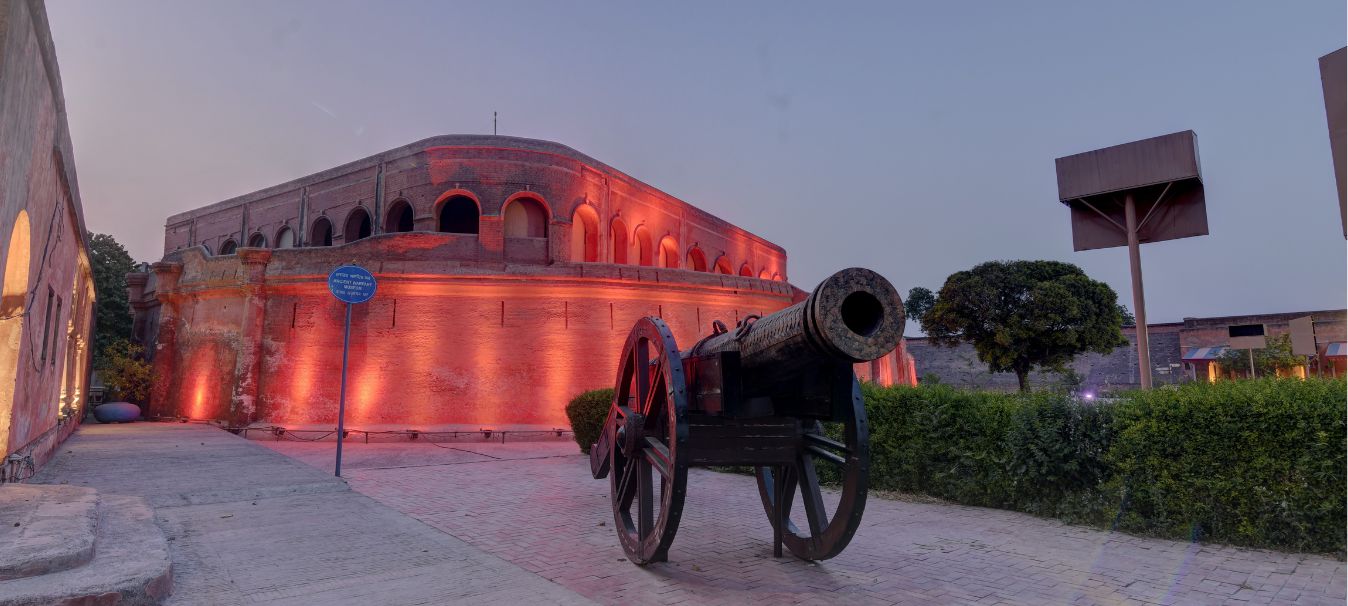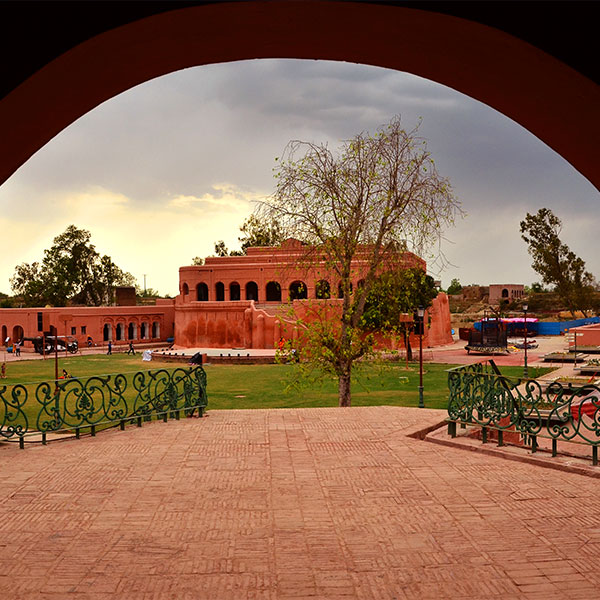

Gobindgarh Fort – the very symbol of Punjab. A character of the times when Punjab was forged. Spread across a grand 43 acres, right in the heart of Amritsar city, this magnificent heritage site has a glorious history of its own. It spans 263 years, right from the era of the Bhangi Misl to Maharaja Ranjit Singh to the British East India Company to the Indian Army. Now finally, it opens its gates to the people of Punjab.
Despite being under restoration, the Gobindgarh Fort has gained popularity in such a short time and has become one of the best tourist places in Punjab. Due to its importance in Amritsar’s history. Many visitors have already declared it one of India's best places.
Discover the grand stories of the past. Discover the history of one of the best historical places in Punjab.


The Punjab region in the 18th Century was ruled by clans called Misls. In the 1760s, Gujar Singh Bhangi, a local chieftain, built this as a mud fortress and came to be known as “Bhagian da Qila”. They owned it till 1809 or for almost 49 years. However, the financial position of the misl deteriorated over time, and by 1809 a minor ruler Gurdit S. Bhangi, a descendent of Gujjar Singh, was ruling Amritsar with the help of his mother, Mai Sukhan. Mai Sukhan asked Arur Mal, a sahukar (trader) of the Bhangi township, to pay nazrana(Tribute). Not wanting to do so, Arur Mal migrated to the township of the rival Kanhiyas misl to avoid payment. At that time, Maharaja Ranjit Singh was a rising star belonging to the Sukerchakia Misl. Arur Mal conspired with Shaikh Kamaluddin, a leading citizen, and they invited Ranjit Singh to take over the Fort and the territories of Gurdit Singh. Maharaja Ranjit Singh was looking for just such an opportunity. He called Mai Sukhan to surrender a giant cannon known as the Zamzama Cannon, “Bhangian di Tope”. Maharaja Ranjit Singh claimed that he had the right to the cannon as it was the Sukerchakia Misl’s share of the spoils of the war with the Afghan king, Ahmad Shah Durrani, in 1765. Zamzama means “the Taker of Strongholds.” Mai Sukhan refused. Ranjit Singh thereupon entered the city through the Ahluwalia gate. The Bhangies could not hold up again Ranjit Singh’s colossal force.
The Maharaja took over the Fort, and along with it, the Zamzama Cannon and Mai Sukhan and the Bhangies were granted a few villages for their maintenance. After winning the Fort, Maharaja Ranjit Singh went to Shri Harmandir Sahib for darshan and thanked the supreme one. The capture of the Fort was a valuable acquisition for Maharaja Ranjit Singh. He renamed the fort ‘Gobindgarh’ after the tenth Sikh Guru, Guru Shri Gobind Singh Ji. One of the main reasons for the consolidation of the Fort most likely was to guard the city of Amritsar and Shri Harmandir Sahib, known as the Golden Temple, from invaders. This bean-shaped city was most vulnerable to attacks, and there were constant threats from the Afghans from the North-West frontier. This positioning of the Fort outside the historic walled city, unlike other forts in the centre of the historic towns, acted as an invincible barrier to getting through to the pilgrim city. The Fort saw significant repairs, additions and rebuilding from 1805 till 1809, under the supervision of its second governor and foreign minister of Maharaja Ranjit Singh, Fakir Azizuddin. Large sums of money were spent to make the Fort a solid defence fortification with the help of the French Generals who had joined Maharaja Ranjit Singh.
The Maharaja ruled successfully for forty years from the Sutlej to Indus, from Punjab Hills to Khyber Pass on the Indo-Central Asian Route. Every year he spent some time at Amritsar for a change of climate and taking a bath in the holy tank. Generally, he reached Amritsar before the rainy season set in and remained there till the Dussehra celebrations were over. The Fort was captured by the British after the Second Anglo-Sikh War in 1849. After Independence, the Fort was garrisoned by the Indian army in 1947. Gobindgarh has been at the very heart of political events in Punjab for most of its existence. Since it was always a military preserve, it was inaccessible to ordinary people. It was hidden within a surrounding compound wall and concealed by trees and vegetation for almost a Century. More than any other military site Gobindgarh encapsulates the dramatic rise of Punjab, its golden days and then the collapse of the Sikh Kingdom when faced with the relentlessly expanding British Empire till its Independence. Finally, recognising the historical significance of this fortified precinct, in 2006, the Government of India handed over the vacant possession of the Fort for protection and conservation to the Government of Punjab. It was declared a historical monument by the Government of Punjab under The Punjab Ancient and Historical Monuments and Archaeological Sites and Remained Act in 1964.